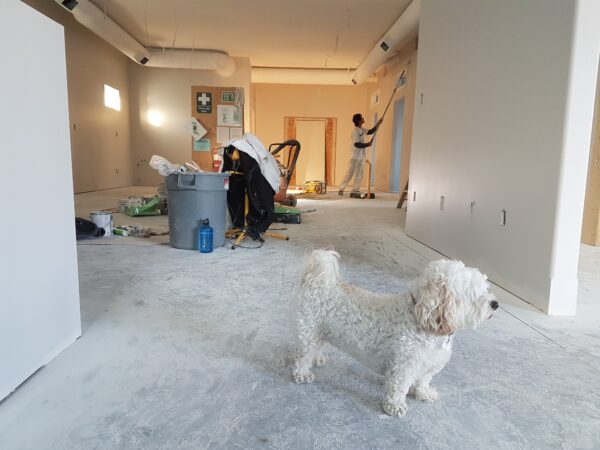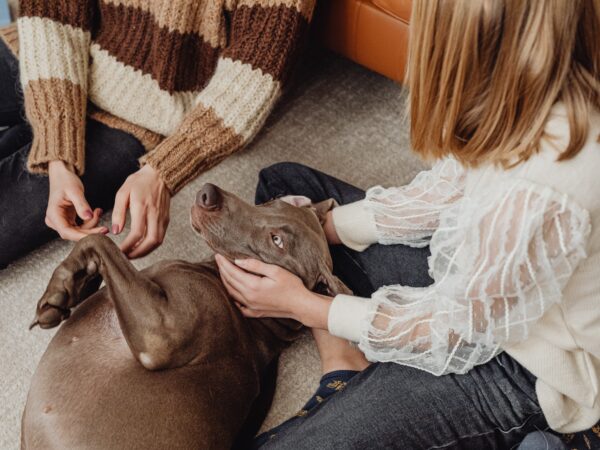As humans, we love to communicate with each other. We use words, gestures, and facial expressions to convey our feelings and thoughts. But what about our furry friends? Animals have their own way of communicating, and it’s up to us to learn and understand how they communicate. Animal communication is a vital part of building a strong bond with our pets. In this article, we will look at some tips for building a strong bond with your pet through communication.
1. Understand Your Pet’s Body Language
Just like humans, animals show their emotions through their body language. Understanding your pet’s body language is the first step in effective communication. For example, a dog wagging its tail doesn’t always mean it’s happy.
If it’s wagging its tail high and stiff, it could be showing aggression. Conversely, if it’s wagging its tail low and loosely, it’s more likely to be friendly. Similarly, a cat’s body language is very different from a dog’s, and their tail positioning is particularly important.
Learning to read your pet’s body language can help you understand when it’s happy, scared, or uncomfortable.
2. Use Positive Reinforcement
Positive reinforcement is a powerful tool in animal communication. It involves rewarding desirable behavior, rather than punishing undesirable behavior.
When your pet does something good, like obeying a command or performing a trick, reward it with a treat or praise.
This way, your pet will learn that good behavior is rewarded and will be more likely to continue to behave well. Positive reinforcement builds trust and mutual respect between you and your pet.
3. Spend Quality Time with Your Pet
Spending quality time with your pet is essential for building a strong bond. Take your dog for walks or play with your cat.
This time spent together is an excellent opportunity to communicate with your pet. You can try different activities and see what your pet enjoys most.
This is also a great time to observe your pet’s behavior and learn its quirks.
4. Be Consistent
Consistency is vital in animal communication. Use the same commands and gestures each time you communicate with your pet.
For example, if you use the command “sit” to get your dog to sit, be consistent and always use that same command.
Consistency helps your pet to understand your intentions better, and what you expect from them.
5. Be Patient
Just like humans, animals have different personalities, and some learn faster than others. When learning a new behavior or command, your pet may take a little longer to understand.
Being patient and consistent can help ensure your pet fully understands what you are trying to communicate.
6. Give Individual Attention to Each Pet
If you have multiple pets, it’s important to give individual attention to each one. Animals can become jealous if they feel that they are not getting enough attention.
Giving each pet individual attention helps to establish a strong bond and can prevent behavior problems.
7. Learn Your Pet’s Language
Learning your pet’s language is an essential part of communication. Each animal has its own way of communicating, and it’s up to you to learn what your pet is trying to tell you. For example, a cat’s meow can mean different things.
A short, high-pitched meow could mean “hello,” while a long, drawn-out meow could mean “feed me.” Understanding your pet’s language is a valuable way to show that you respect and care for them.
8. Train Your Pet
Training your pet is not just about teaching it commands. It’s also about establishing a bond and communicating with your pet in a positive way.
Training is an excellent opportunity to build trust and respect between you and your pet. Start with simple commands and slowly build up to more complex ones.
When your pet successfully completes a task, reward it with praise and treats.
9. Respect Your Pet’s Space
Respecting your pet’s space is an important part of communication. If your pet is not in the mood to cuddle or play, don’t force it. Learn to read your pet’s body language and respect its boundaries.
When your pet knows that it can trust you to respect its space, it will be more likely to approach you for attention and affection.
10. Be Aware of Your Own Body Language
Finally, it’s important to be aware of your own body language when communicating with your pet. Animals can sense when you are angry, upset, or stressed, and this can affect your pet’s behavior.
On the other hand, if you are calm and relaxed, your pet is more likely to feel at ease and respond positively.
Conclusion
Animal communication is key building a strong bond with your pet. Understanding your pet’s body language, using positive reinforcement, and spending quality time with your pet are just a few of the ways to establish a strong bond.
Being consistent, patient, and respectful of your pet’s space are also important elements of effective communication. By following these tips,
you can strengthen your bond with your pet and ensure a happy and healthy relationship for years to come.











